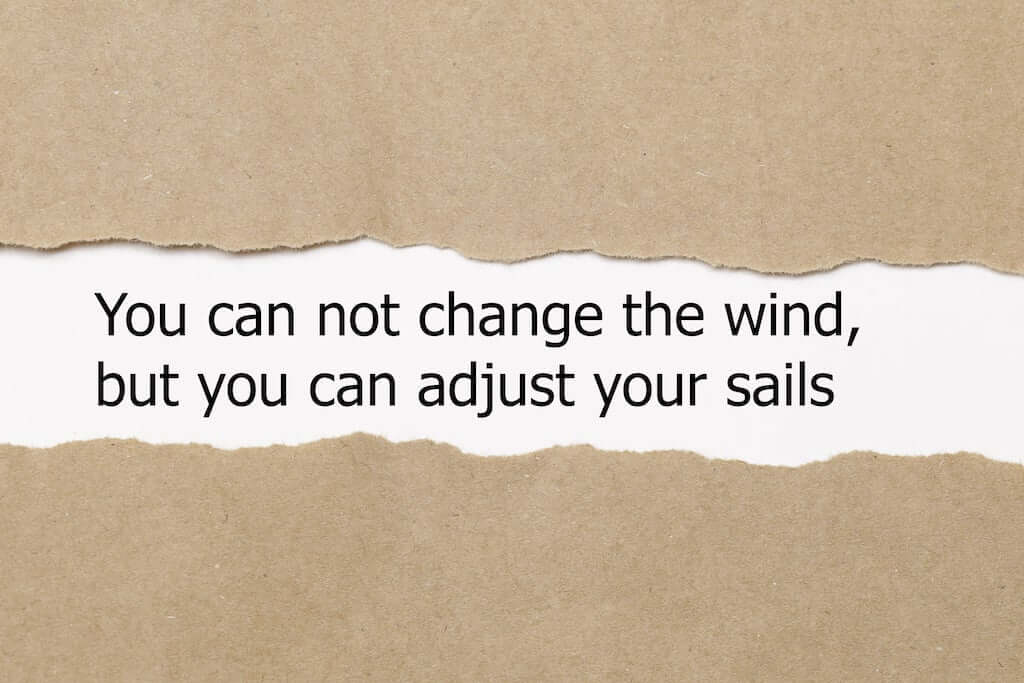Sustainable Caregiving Strategies
Strategy: Plan for the Worries
In caregiving, the worries are real and often become reality. Worrying about the what-ifs causes stress. If we aren’t prepared, managing the new reality of caring for a family member, can intensify the stress. When we make a plan, and often a plan A, B, and C, we can stop the fretting. When we face the what-ifs head-on and imagine what we might encounter, we begin to see what questions we need to ask and what information we need to gather in order to make a plan.

The research will lead to resources and the answers will lead us to more questions until we fill in the vastness of the what-if with a strategy, a plan. We are then able to set the worry aside and focus on the present, we feel prepared and empowered. Your power lies in the plan.
“To grow high and proud, a tree needs storms.”
Irvin Yalom
Define the worry:
The worry might be evacuating for a hurricane or a fire, handling a hospitalization during a pandemic or looking ahead to the time that you will need help caring for your family member.
Determine the needs:
Is the plan focused on prevention, a possible occurrence or both? What preventative steps are needed? If your worry comes to fruition, what is needed to manage the situation? What questions might you ask your care recipient now, so that their wishes are considered as you move forward with the plan? You may not know what you will need. Look to those who have experienced a similar situation and begin to develop a clearer picture of possible outcomes.
Do the research to determine the options:
The research may start online or you may have a contact who could point you in the right direction. The further you travel on this journey, the more travel companions you will acquire. They may be healthcare professionals, former or current family caregivers, agencies or staff in the care industry. These companions are wonderful guides who can help you develop your plans.
Include other family members:
Consider including other family members in the plan. Siblings, for example, may not be able to directly provide care, but they may be able to support care in many other ways, drawing on their individual strengths.
Technology for added value:
As care needs for the elderly increase, new technology is appearing on the market that can help us more easily manage challenging situations. From smart home systems to systems that interact remotely with your family member, more and more helpful services are being developed.
Consult with legal, financial and medical professionals:
Consulting with an elder law attorney prior to making certain commitments can prevent a host of future problems. A session with a financial advisor may illuminate alternative options. A medical professional may help you better understand a disease progression which can help with preparation and planning details.
Acceptance:
Once you have defined your worry, assessed the options, and created the plans to manage the possible outcomes, the next step is the key to being worry-free. We know that we have done our best to prevent and plan for each worry and accept we can not control what happens next. Acceptance is one of the most powerful strategies that we can employ to minimize stress and it is the topic of the next lesson.
Seamless Practice

Reflect:
- What is your greatest worry at the moment?
- What are the possible outcomes?
- What knowledge or information would allow you to worry less?
Journal:
- Thinking of your current greatest worry, what questions need to be asked and answered in order for you to begin to formulate a plan to prepare for that reality?
- Where might you find those answers or resources? Who can you contact for direction?


Apply:
- Begin the process of asking the questions and filling in the gaps of the plan to address your greatest worry.
- As worries arise, log them in your journal and begin the process again.
